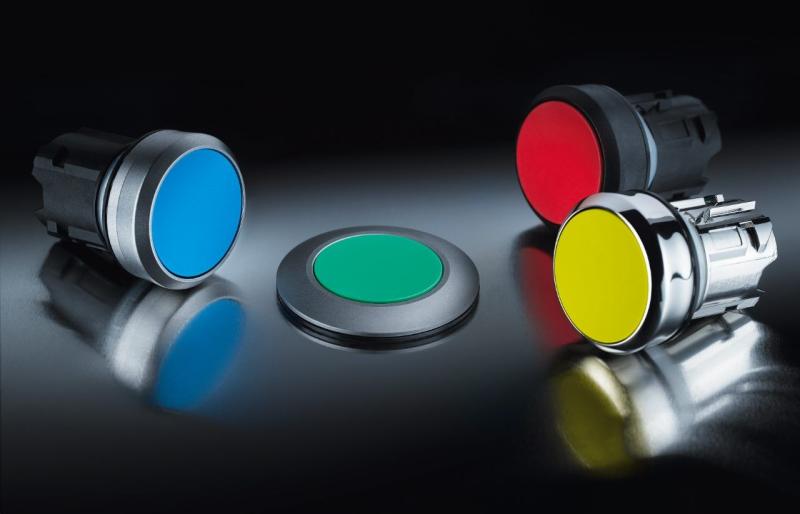Signalling devices play a crucial role in various industries, providing essential communication and alert mechanisms that ensure safety, efficiency, and operational continuity. These devices encompass a broad range of electronic and mechanical tools used to convey information visually, audibly, or through other sensory signals. Understanding the different types, applications, and market dynamics of signalling devices enables businesses and individuals to make informed decisions when selecting appropriate solutions for their specific needs.
Overview of Signalling Devices and Their Industrial Applications
Signalling Devices are integral to facilitating communication across numerous sectors, including transportation, manufacturing, utilities, and emergency response systems. These devices serve as critical components for conveying warnings, status updates, and instructions, often in environments where direct verbal communication is unavailable or inefficient. Examples include alarms, indicator lights, horns, sirens, beacons, and vibrating alerts, each designed to capture attention and promote rapid response.
In industrial settings, signalling devices enhance safety by alerting workers to hazardous conditions, equipment status, or emergency evacuations. For instance, in manufacturing plants, flashing lights and audible alarms can indicate machinery malfunctions or safety breaches, thereby preventing accidents and minimizing downtime. In transportation, signalling devices are pivotal in traffic management and railway systems for collision avoidance and timely alerts.
Types and Features of Modern Signalling Devices
The signalling devices market offers a diverse portfolio of products tailored to different operational requirements. These devices can be broadly categorized based on the mode of signalling: visual, audible, or combined multi-sensory alerts. Visual signalling devices are designed to capture attention using lights of various colors and intensities, such as LED indicators, flashing beacons, and digital displays. Audible devices include sirens, buzzers, and horns that emit sounds at varying frequencies and volumes to ensure perception in noisy environments.
Advanced signalling devices incorporate smart technologies, including wireless communication, programmable alerts, and integration with broader safety and monitoring systems. This enables real-time data collection, remote management, and customization of alarms according to situational demands. The reliability, durability, and ease of installation are key considerations driving the adoption of these modern signalling solutions across industries.
Commercial and Transactional Aspects Impacting Signalling Device Procurement
When procuring signalling devices, commercial and transactional factors play a significant role in decision-making. Pricing structures, supply chain efficiency, compliance with international safety standards, and after-sales support influence purchase choices. Suppliers offering customizable solutions, volume discounts, and integrated warranty services tend to attract larger contracts, especially from industrial clients emphasizing reliability and long-term operational integrity.
The rise of e-commerce platforms and B2B marketplaces has revolutionized the commercial landscape for signalling devices, affording buyers convenience and comparative options. Additionally, companies increasingly prioritize eco-friendly and energy-efficient products aligning with sustainability goals, driving demand for signaling devices with reduced power consumption and longer service life.
Emerging Trends in the Signalling Device Industry
The signalling device industry is experiencing transformative changes fueled by advancements in IoT (Internet of Things), AI (Artificial Intelligence), and wireless technologies. Smart signalling devices capable of predictive alerts and seamless integration with digital control systems present new possibilities for enhancing safety and operational responsiveness. Moreover, growing urbanization and infrastructure development are propelling demand for sophisticated signalling solutions in traffic management, public safety, and industrial automation.
Future outlooks forecast increased adoption of multifaceted signalling devices combining visual, audible, and tactile alerts to cater to diverse user requirements, including accessibility for individuals with disabilities. Additionally, regulatory bodies worldwide are tightening safety standards, compelling manufacturers to innovate and improve device reliability. Investment in research and development remains crucial for stakeholders aiming to capture emerging market segments and maintain competitiveness in this evolving environment.
Signalling devices remain foundational elements in ensuring safety, enhancing operational efficiency, and facilitating seamless communication across industries. Their growing technological sophistication and wide-ranging applications underscore the importance of well-informed market knowledge for manufacturers, suppliers, and end-users alike. Stakeholders leveraging detailed analytical data and industry insights are better positioned to navigate this dynamic market landscape and capitalize on emerging growth opportunities in the signalling device sector.
Get This Report in Japanese Language -信号装置市場
Get This Report in Korean Language -신호 장치 시장
Read More Articles Related to this Industry –
How ICT Companies Can Leverage Google Business Profile for Local SEO Success
How Predictive Maintenance is Revolutionizing Industrial IoT
Prescriptive Analytics vs. Predictive Analytics: Key Differences and Applications
About Author:
Priya Pandey is a dynamic and passionate editor with over three years of expertise in content editing and proofreading. Holding a bachelor's degree in biotechnology, Priya has a knack for making the content engaging. Her diverse portfolio includes editing documents across different industries, including food and beverages, information and technology, healthcare, chemical and materials, etc. Priya's meticulous attention to detail and commitment to excellence make her an invaluable asset in the world of content creation and refinement.
(LinkedIn- https://www.linkedin.com/in/priya-pandey-8417a8173/)
